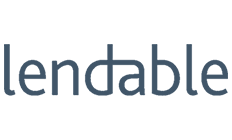Our Lenders
We work with trusted brokers to give you access to a panel of leading lenders well placed to meet your needs at the lowest rates.










Saving up enough money for a deposit on a mortgage can be a lengthy and daunting process. Whether you’re a first-time buyer or an existing homeowner, it can be a struggle to get together enough for a large deposit.
If you’re in a similar position and can only afford a small deposit for your next property purchase, a low-deposit mortgage may be just the thing for you.
What Is a Low-Deposit Mortgage?
A low-deposit mortgage is a type of secured loan that only requires a small (or low) deposit from the borrower. This means that the LTV (Loan-to-Value) on the mortgage will be quite high, with most low-deposit mortgages ranging from around 90%-95% the value of the property.
Thanks to the government’s launch of its mortgage guarantee scheme last year (in April 2021), low-deposit mortgages are now much more widely available. This scheme was built to help buyers with a small deposit get a mortgage that accommodates to this – deposits allowed to range from 5% to 9%.
This scheme will be available until December 2022 and can be used on properties worth a maximum of £600,000.
Partnered with
What Is the Mortgage Guarantee Scheme?
The mortgage guarantee scheme is a scheme that launched in April 2021, designed to improve the availability of low-deposit mortgage deals.
Since the COVID-19 pandemic, 95% mortgages have been tricky to come by, leaving a lot of prospective borrowers stuck and unsure where to turn. The scheme is working with a number of major lenders, enabling prospective homeowners to apply for 95% LTV mortgages.
The scheme is available to first-time buyers as well as previous homeowners who have a 5% deposit available and helps them to access 95% mortgage deals that can accommodate to this low deposit.
The mortgage guarantee scheme launched on Monday the 19th of April 2021, and is available until December 2022.
What Different Types of Low-Deposit Mortgages Are Out There?
There are a number of different low-deposit mortgages out there, two main types being a variable rate and a fixed rate.
- Variable rate – the majority of these are tracker mortgages, meaning it will track the bank’s SVR (standard variable rate), adding or taking away a certain, set percentage. Variable rate mortgages can have lower rates compared to fixed-rate mortgages in the short term, however, it’s important to note that this can change.
- Fixed rate – with this rate, borrowers’ repayments will be set to a fixed amount throughout the duration of the deal. This helps give borrowers peace of mind knowing exactly how much their repayments on their mortgage will be, however it can come with big fees for repaying early or changing the product before the set end of its term.
The length of these low-deposit mortgages varies also, with fixed rate typically lasting around two-five years.
What’s the Lowest Deposit for a Mortgage?
You’ll typically find that the lowest deposit required for a mortgage is around 5% – 10%, however, some lenders may even offer a 100% LTV mortgage on a shared ownership property.
This means that, in the right circumstances, you might not even need a deposit for your mortgage. However, this is only in exceptional circumstances, and a deposit of some kind will generally be required for a mortgage.
Am I Eligible for a Low-Deposit Mortgage?
Your eligibility for a low-deposit mortgage can be affected by various different factors, including the following:
- Your credit score
- Your income
- Details of your employment
- Where you are based (typically need to be based in the UK)
- Whether you can provide the required deposit amount
As with any kind of mortgage, you’ll have to show that you’re able to afford repayments on the loan, with low-deposit mortgages being no exception!
Partnered with
Should I Get a Low-Deposit Mortgage?
Low-deposit mortgages can be a great idea for those who can only afford a small deposit amount or are struggling to grow their deposits larger than 5%-10% of the property’s value.
As when considering any new financial move, it’s good to weigh up the pros and cons of this to ensure you’re making the right decision.
Low-Deposit Mortgage, Cons:
- With a low-deposit mortgage you could potentially face higher fees and interest rates due to the increased risk to the lender for lending a greater sum of money than with lower LTVs.
- As not all lenders offer these types of mortgages, there’s less variety and therefore less options for prospective borrowers to choose from.
Low-Deposit Mortgage, Pros:
- Those with a small deposit won’t have to wait to grow this into a larger sum, and have the opportunity to buy a home sooner than with other types of mortgages.
- Those with low equity in their current homes wanting to move in the near future have the opportunity to do this with a low-income mortgage, rather than waiting for their equity to grow by staying in the same place for longer than they’d want.
How Do I Apply for a Low-Deposit Mortgage?
You can explore and compare low-deposit mortgages online. Once you’ve found the mortgage that works best for you, you’ll then have to go through the lender’s application process, having them assess the property you’re wanting to purchase as well as details surrounding your affordability before making a decision.
During any affordability testing, the lender will most likely conduct a loan-to-income check, as well as a credit check and an assessment of other details to deem how likely you are to manage repayments on the loan.
If accepted for the low-deposit mortgage, you’ll then receive a formal offering, and can proceed with the purchase of the property.